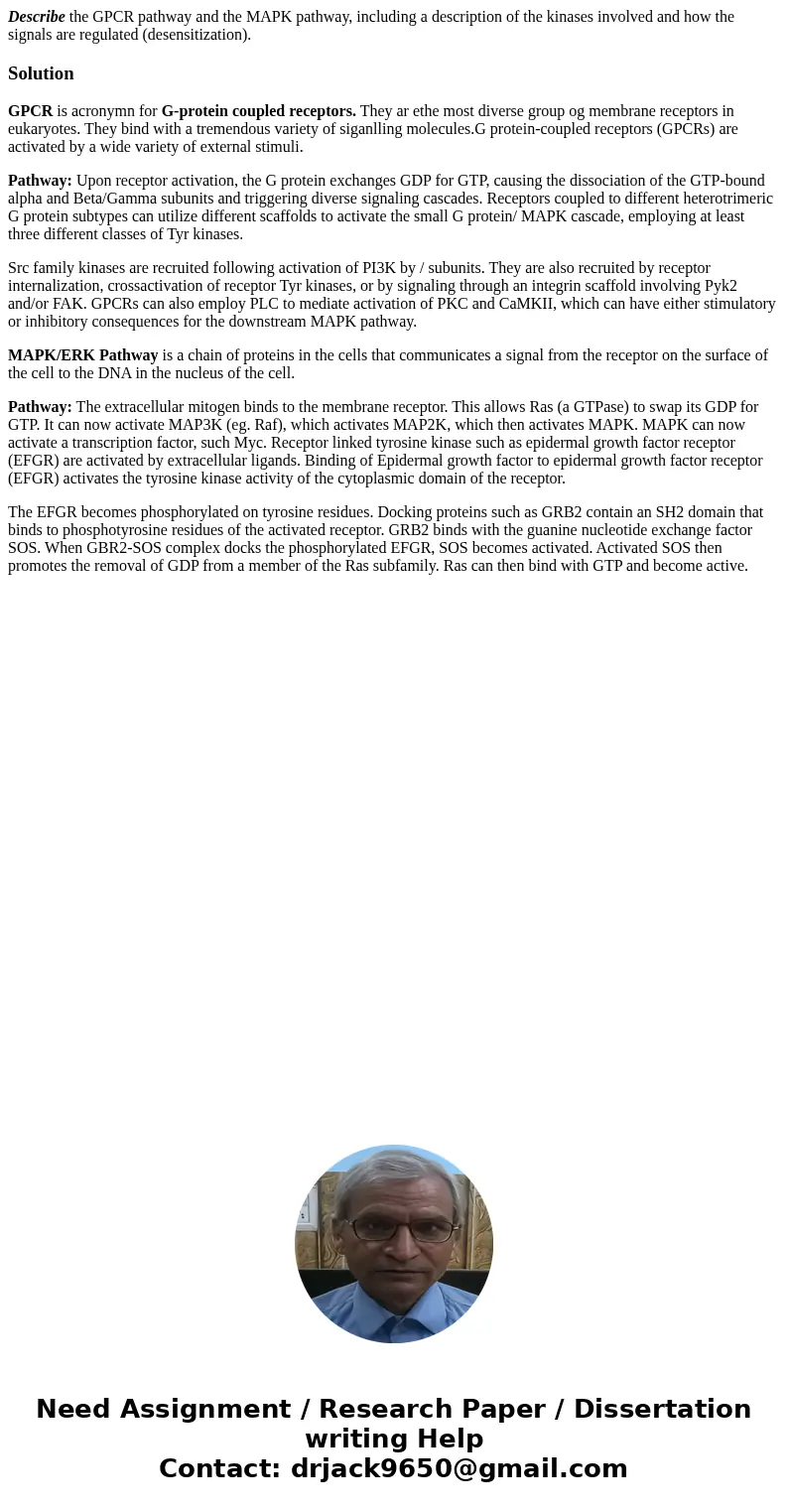Describe the GPCR pathway and the MAPK pathway including a d
Describe the GPCR pathway and the MAPK pathway, including a description of the kinases involved and how the signals are regulated (desensitization).
Solution
GPCR is acronymn for G-protein coupled receptors. They ar ethe most diverse group og membrane receptors in eukaryotes. They bind with a tremendous variety of siganlling molecules.G protein-coupled receptors (GPCRs) are activated by a wide variety of external stimuli.
Pathway: Upon receptor activation, the G protein exchanges GDP for GTP, causing the dissociation of the GTP-bound alpha and Beta/Gamma subunits and triggering diverse signaling cascades. Receptors coupled to different heterotrimeric G protein subtypes can utilize different scaffolds to activate the small G protein/ MAPK cascade, employing at least three different classes of Tyr kinases.
Src family kinases are recruited following activation of PI3K by / subunits. They are also recruited by receptor internalization, crossactivation of receptor Tyr kinases, or by signaling through an integrin scaffold involving Pyk2 and/or FAK. GPCRs can also employ PLC to mediate activation of PKC and CaMKII, which can have either stimulatory or inhibitory consequences for the downstream MAPK pathway.
MAPK/ERK Pathway is a chain of proteins in the cells that communicates a signal from the receptor on the surface of the cell to the DNA in the nucleus of the cell.
Pathway: The extracellular mitogen binds to the membrane receptor. This allows Ras (a GTPase) to swap its GDP for GTP. It can now activate MAP3K (eg. Raf), which activates MAP2K, which then activates MAPK. MAPK can now activate a transcription factor, such Myc. Receptor linked tyrosine kinase such as epidermal growth factor receptor (EFGR) are activated by extracellular ligands. Binding of Epidermal growth factor to epidermal growth factor receptor (EFGR) activates the tyrosine kinase activity of the cytoplasmic domain of the receptor.
The EFGR becomes phosphorylated on tyrosine residues. Docking proteins such as GRB2 contain an SH2 domain that binds to phosphotyrosine residues of the activated receptor. GRB2 binds with the guanine nucleotide exchange factor SOS. When GBR2-SOS complex docks the phosphorylated EFGR, SOS becomes activated. Activated SOS then promotes the removal of GDP from a member of the Ras subfamily. Ras can then bind with GTP and become active.

 Homework Sourse
Homework Sourse